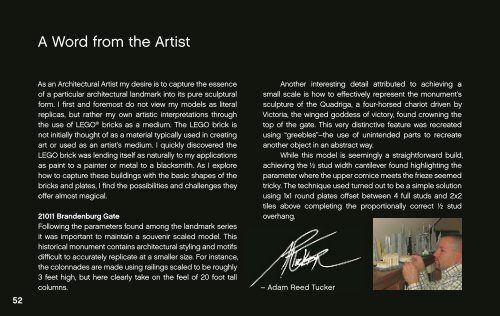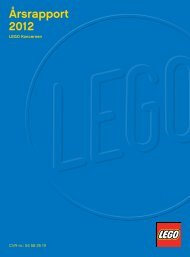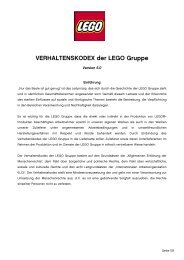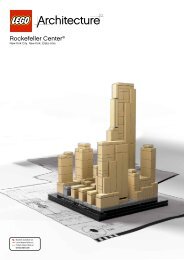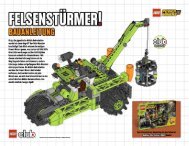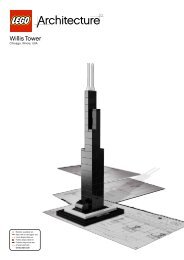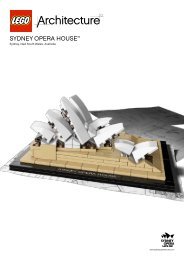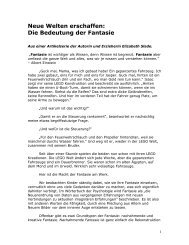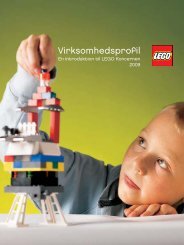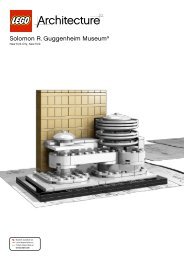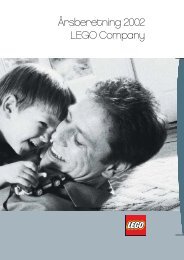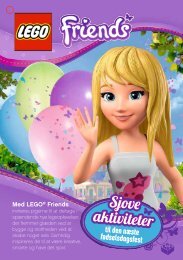Brandenburg Gate Brandenburg Gate
Brandenburg Gate Brandenburg Gate
Brandenburg Gate Brandenburg Gate
Create successful ePaper yourself
Turn your PDF publications into a flip-book with our unique Google optimized e-Paper software.
52<br />
A Word from the Artist<br />
As an Architectural Artist my desire is to capture the essence<br />
of a particular architectural landmark into its pure sculptural<br />
form. I fi rst and foremost do not view my models as literal<br />
replicas, but rather my own artistic interpretations through<br />
the use of LEGO ® bricks as a medium. The LEGO brick is<br />
not initially thought of as a material typically used in creating<br />
art or used as an artist’s medium. I quickly discovered the<br />
LEGO brick was lending itself as naturally to my applications<br />
as paint to a painter or metal to a blacksmith. As I explore<br />
how to capture these buildings with the basic shapes of the<br />
bricks and plates, I fi nd the possibilities and challenges they<br />
off er almost magical.<br />
21011 <strong>Brandenburg</strong> <strong>Gate</strong><br />
Following the parameters found among the landmark series<br />
it was important to maintain a souvenir scaled model. This<br />
historical monument contains architectural styling and motifs<br />
diffi cult to accurately replicate at a smaller size. For instance,<br />
the colonnades are made using railings scaled to be roughly<br />
3 feet high, but here clearly take on the feel of 20 foot tall<br />
columns.<br />
Another interesting detail attributed to achieving a<br />
small scale is how to eff ectively represent the monument’s<br />
sculpture of the Quadriga, a four-horsed chariot driven by<br />
Victoria, the winged goddess of victory, found crowning the<br />
top of the gate. This very distinctive feature was recreated<br />
using “greebles”–the use of unintended parts to recreate<br />
another object in an abstract way.<br />
While this model is seemingly a straightforward build,<br />
achieving the ½ stud width cantilever found highlighting the<br />
parameter where the upper cornice meets the frieze seemed<br />
tricky. The technique used turned out to be a simple solution<br />
using 1x1 round plates off set between 4 full studs and 2x2<br />
tiles above completing the proportionally correct ½ stud<br />
overhang.<br />
– Adam Reed Tucker


